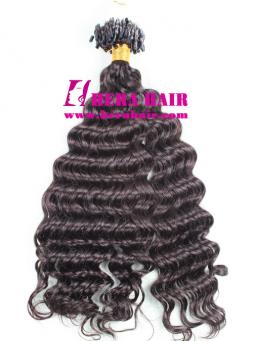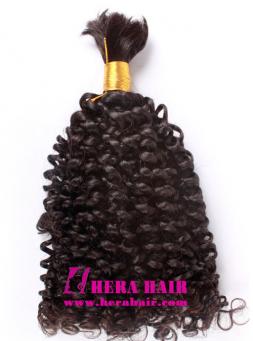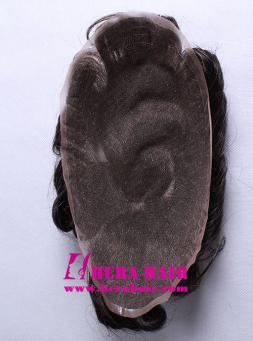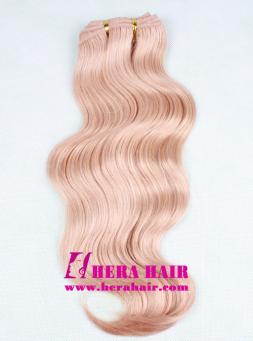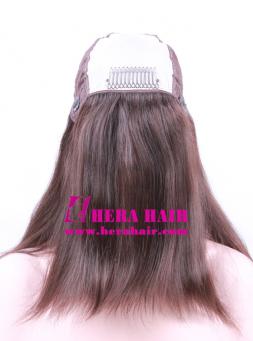She Goes Covered
Following the global hair trade, from the braid-laden Peruvian highlands to the sheitel machers of Borough Park.
I.
In the fall of 2009, Helene Rosen, her husband, Yoni, and eight of their eleven children moved from Baltimore to Cusco, Peru, to harvest human hair. Helene is a forty-four-year-old Orthodox Jew and self-proclaimed “master sheitel designer” who began making wigs fifteen years ago, for ten dollars an hour; her custom hairpieces now sell for up to two thousand. “You can bring me any wig,” she said this past winter, sitting at the table in her spare dining room in Cusco, “and I can tell you how old it is, how much it has been worn, and if it has ever been repaired. I can tell you everything about it.”
Helene first encountered sheitels, which Orthodox women have worn since the nineteenth century as an alternative to covering their hair (as Jewish modesty law dictates), in 1995. She had moved to Lakewood, New Jersey from Israel, where most Orthodox women wear headscarves called snoods rather than wigs. Yoni, who is American, had a good job as a fireman in their West Bank settlement, but the schools were subpar and the opportunities limited; they couldn’t envision raising their children there. While searching for a job in the US, Helene came across a newspaper ad posted by a salon looking for people who could “ventilate”; having been raised in France, Helene assumed that the word was derived from ventiler, and that the job would entail blow-drying hair, not tying individual strands into the lace cap of a wig. When
she arrived, though, she found herself charged with repairing expensive “American wigs.” Her employer, an extremely religious Orthodox woman, had Helene sign a contract agreeing not to work for any other wigmaker for ten years or else be fined $150,000.
As Helene learned, the sheitel craft is the province of a competitive elite that guards its secrets jealously. Her employer would leave the room whenever the hair supplier called to discuss shipments, and limited her instruction to the mechanics of wigmaking. So long as she couldn’t piece together the disparate parts of the trade, Helene would never present a challenge. She kept this job for four years while applying for a green card; she and Yoni relied on welfare checks to support their family. Eventually they gave up and moved back to Israel, where Helene worked as a cashier at a grocery store. A few years later Helene received a green card and they returned to the US legally, this time moving to Baltimore. Despite the contract with her former employer, Helene was determined to work as a wig-repair specialist. She still knew only the rudiments of the craft, but, working by trial and error, she eventually mastered the intricacies of high-end sheitels. Once she had taught herself to create a sheitel from scratch, it occurred to her that that there might be a business in selling, rather than hoarding, her knowledge. “I said to my husband, ‘You know, I am sure some woman would love to learn all of the things I’ve discovered.’”
Helene placed an ad for a wigmaking course in the local Orthodox paper, taking on one student at a time. But she soon became frustrated working with other Orthodox women (“they can be very difficult,” she says) and began marketing her course to black women, who constitute the largest market for wigs and weaves. Jewish head coverings were intended as a sign of religiosity, but they have become socioeconomic indicators, too, much as they are for black women.
Orthodox and black vendors buy hair from the same sources, and their customers oftentimes live in adjacent neighborhoods, but each group tends to be unaware that the other exists. While sheitels are secured by elastic caps and are often designed with heavy bangs to obscure the hairline of their wearers (whose own hair is usually cut short or pinned), the lace-front wigs worn by black women have far more realistic hairlines and are affixed to the forehead; Helene refers to these hairpieces(which are worn by stars such as Tyra Banks and Beyonce) as “celebrity wigs.” As Helene made a name for herself, she introduced her own line of custom sheitels as well as lace-front wigs, purchasing the hair from wholesale importers and sending the designs to manufacturers in China. She soon came to the conclusion that her business would be more profitable if she were sourcing the hair herself rather than buying from erratic dealers, and supervising the production instead of relying on foreign contractors. “I knew that much of the hair came from indigenous women in South America,” she told me. “I thought, ‘What if I bought directly from them? They need the money to feed their families—they’d be happy to sell their hair if they had the chance.’”
II.
The Rosens’ shabby ground-floor apartment is on a winding cobblestone street near the historic center of Cusco, an area crowded with youth hostels, laundries, and restaurants catering to young backpackers, many of them Israeli. (Helene's oldest son, Enatan, twenty-three, recently began working at a dingy Israeli hostel and falafel shop that caters to the post-military-service party crowd.) Helene opens the door, surrounded by her five youngest children, and greets me with a warm hug. She’s wearing a tight floral button-down top, a long jean skirt, and a black crocheted hairnet. “I only wear the sheitel when I’m representing the brand,” she says. It’s Friday, and Helene is buzzing around the house, trying to finish the Shabbos cooking and cleaning before sundown. As she runs back into the kitchen, she dumps a pile of silky dark brown ponytails onto the dining-room table—Yoni collected them on a recent buying trip to Argentina—and invites me to pick through them. “Go ahead and take a few if you want,” she says.
Moments later, Helene returns with a plate of chocolate Shabbos cake, placing it within a few inches of the hair pile, and two hulking clumps of challah dough, which she proceeds to braid. “I only deal with virgin-cuticle hair,” she says, referring to the protective layer of scales that keep hair healthy and strong. “That means the natural color is intact. It hasn’t been dyed or permed or relaxed. It hasn’t been swept off the floor of a salon, or pulled from hairbrushes.” Helene is evasive when I ask how she procures hair, but her neighbor later tells me that Yoni, a kosher butcher by trade, drives to the surrounding Quechua and Aymara villages, passes out flyers advertising the rates for hair of various lengths, colors, and qualities, and then sets up a table in the central plaza, where women line up with hair in hand.
The market for human hair is generally limited to places with impoverished populations willing to sell a two-foot ponytail—the product of two years of growth—for twenty dollars. Dark hair comes primarily from South America, India, and Mongolia. Helene says that the ample selection of hair colors and textures in South America—the result of more than twenty-five generations of intermarriage between Europeans and indigenous people—make it the ideal source region. The hair of indigenous Peruvian women is thick, straight, and black—perfect for the lace-front wigs sought by black women, who have come to represent the majority of Helene's business—and is worn in two braids that often stretch all the way down their backs and are plaited with tassels made from Alpaca wool. Orthodox women prefer the silkier, finer texture of Argentinean hair, or else the more rare blonds and reds from eastern Europe and Russia (generically labeled as “European” hair), which garner one hundred dollars per two-foot strand. "The European hair is very bouncy," Helene
says. "It's just characteristic—like some people have blue eyes, some people have dark eyes. With Indian hair, the bottom is poofy and doesn't move that much. For a wig to look natural, we need the bottom to be bouncy."
While we talk, Helene’s five-year-old child, Avi, squirts body lotion all over the walls, which are already marred by zigzagging crayon marks. Toys and suitcases overflowing with clothing are strewn about the floor. The house is a paragon of disorder: Children between the ages of three and twenty—all of whom are being home-schooled—live together in two spare rooms. Though the children never complain, they seem harried: Their legs are pocked with bed-bug bites, there is no more cooking fuel, and nobody knows what time it is because the computer has been broken for months and there are no clocks in the house. Helene’s teenage son, Shlomi, huffs when she asks him to take his younger siblings to the park yet again. The eldest brother, Guy, seventeen, who recently decided to stop keeping kosher, arrives for Shabbos dinner with a black-and-white keffiyeh wrapped around his neck. Helene calmly asks what he’s wearing. “It’s just a scarf!” he says.
I ask Helene where her staff of wigmakers works.
She points toward the kitchen and says, “Go ahead and look behind that door.” There I find a cramped, fluorescent-lit room where four Quechua women sit around a folding table laden with thick, chestnut-colored ponytails, each weaving strands into a canvas wig block. They giggle nervously as I examine their handiwork. “I don’t know who wears them,” one says, “but I think they’re important people.”
When I return to the dining room, Helene and the children are braiding the last of the challah. “I make them pancakes every morning,” Helene says, nodding toward the workshop with pride. “They love pancakes.”
III.
I first met Helene last November, at a three-day class she was teaching in the Orthodox neighborhood of Borough Park, Brooklyn, where sheitel shops and salons line the streets. The class was held in the tiny kitchenette of a drab apartment decorated like a funeral parlor: murky floral-print polyester curtains, musty maroon carpeting, lacquered furniture, and fake flowers in plastic vases. Helene had flown in from Cusco the night before, bringing her son Guy and nineteen-year-old daughter, Ada. There were no other Jews in Peru, no religious schools, and they had no intention of learning Spanish. When Helene returned to Cusco, they would move to Baltimore to live with family.
Helene flies to New York and London a few times each year to teach groups of between two and five Orthodox and black women to make sheitels and “celebrity wigs.” She guarantees her students will learn how to craft wigs by hand and also outsource their production to China (many wigmakers do some of each), buy and sell hair in bulk, and generally navigate the nine-hundred-million-dollar-per-year international industry. Helene provides the students with her coveted rolodex of hair purveyors across the world, reliable factories in China, and wholesale suppliers, which she tells me she’s sold for two thousand dollars alone. While the traditional coterie of wigmakers in Borough Park and other Orthodox communities shrinks and stagnates, Helene's enterprise is becoming increasingly global, flexible, and efficient. “I don’t believe in competition,” Helene will later tell me, referring to the secretive milieu of her old employer. “If God wants me to make money, He will send it to me.”
Helene is seated at a plastic card table with Tunisia, a outgoing black woman in her mid-twenties with a long, bleached weave, and Ahava, a middle-aged Orthodox woman with a sleek, blond, bob-style sheitel. Tunisia, who found Helene's class on the Internet, wants to open a high-end hair-supply business for black women in Durham, North Carolina, where she lives. She says the women she knows (herself included) spend far too much on low-quality hair. Many vendors advertise cheap stuff as virgin-cuticle hair, knowing it will become tangled and deformed after it has been washed and worn. “There is a brand my girlfriend gets from the Chinese store,” she says, fondling the strands of hair on the table. “It comes on the weave. It’s $200 a bundle and it lasts her three or four months—then she throws it away.”
Whereas the hairpieces worn by black women range from curly to bone straight, weaves to clip-on ponytails, to the untrained eye Orthodox women might seem to all be wearing the same hairdo: straight, bangs, not too short, not too long. (Curly hair is undesirable, as it symbolizes an unruly spirit.) As Helene pages through her catalogue of hair, Tunisia asks, “Wait, why do Jewish women wear wigs?”
“Some women don’t believe in wearing wigs—some rabbis also,” Helene says. “Then you have another rabbi that says you can wear just a small hat on top of your own hair. Hassidic women in Williamsburg, they have their own wigs, then they have to cover that wig with a little hat or beret or something.” She goes on, as Tunisia nods her head distractedly. “Wigs protect women from anorexia and promiscuity. With our heads covered, we are seen for who we truly are, not for our sexuality.”
Helene explains that many American Orthodox women wear modest, synthetic shaitels that cost as little as fifty dollars; others wear specially fitted, custom-designed wigs assembled in Chinese factories, which can cost as much as five thousand dollars.
“Mine cost forty-eight hundred,” Ahava says sheepishly.
“I never saw these expensive wigs when I was growing up in France,” Helene says. “We used to call them ‘American wigs.’ Let’s see the difference.” She brings out plastic baggies full of hair from different parts of the world. Tunisia and Ahava study them, then do a “squeak test,” running their fingers along each strand. Hairs that are all moving in the same direction only squeak when rubbed from the tip towards the root; if the cuticle has been chemically stripped, it makes no sound.
Tunisia holds a Brazilian ponytail up to the knotted, bleached weave affixed to her scalp and asks, “What have I been wearing all these years?”
IV.
The world’s top supplier of coveted “remy” hair, which has never been chemically treated and retains its cuticle layer, is the Tirumala Tirupati Balaji temple, which sits on a hillside in the southern Indian region of Andhra Pradesh. A quarter of the fifty thousand pilgrims who visit the temple each day have their hair shorn and offer the tresses to Venkateswara, an incarnation of Vishnu with the power to absolve sins. The temple then sells the hair—more than five hundred tons on average—in an annual auction that reaps up to fifteen million dollars. The shorter men’s tresses are used by chemical companies to make fertilizer and baking products; the longer women’s hair ends up in American and European wigs—temple employees call it “black gold.”
All hair on the market, whether it comes from Peru, Russia, or India, the heads of animists, Christians, or Hindus, is taken from people Orthodox Jews classify as idolaters. “We are not allowed to benefit from idolatry whatsoever,” Helene says. “But you don’t have to make your own decision on this matter, you leave it up to your rabbi.” And since the 1950s, most rabbis have agreed that hair is kosher as long as it has not been cut for sacrificial offering or an otherwise idolatrous ritual. Recently, however, many rabbis have become ambivalent about increasingly realistic wigs; Jewish modesty law, or halakhah, compels women to conceal their hair because it is thought to exude sensuousness, but today's hairpieces are often no less sensual. In 2003, Rabbi Yosef Shalom Elyashiv, the preeminent expert on Jewish modesty laws, issued an edict declaring that “modern wigs,” unlike the modest sheitels originally sanctioned by Rabbi Joshua Boaz ben Simon Baruch in the sixteenth century, are meant to make women attractive and thus are “as much a breach of the law as hair.” Additionally, he said that the hair from Tirumala Tirupati Balaji is not kosher.2 Adhering to the religious injunction to destroy idolatrous objects, Orthodox women burnt their wigs en masse; Williamsburg, Brooklyn hosted a bonfire of more than three hundred sheitels.
Other rabbis soon dissented: The women of the Old Testament are described as having covered heads simply because they needed to shield themselves from the desert sun; regardless, the Torah does not dictate how women must cover their heads. And the hair from Tirumala Tirupati Balaji is kosher, since it’s taken from outside the temple walls and cut by civilians employed as barbers, not priests. Many wigmakers thought it best to hedge their bets and now make wigs with only 40 percent sacrificial hair, thereby guaranteeing the rabbinical seal of approval that marks most commercially made sheitels.
Elyashiv, who is one hundred years old, represents the minority of rabbis who oppose all forms of sheitels, despite the fact that the weft technique by which they’re made produces a stiffer, faker look than “celebrity wigs”—the point being to avoid passing off the wig as one’s own hair. (In some communities, women are allowed to have sheitels made with their own hair, as long as it is combined with someone else’s.) Wigs are generally thought to be less modest than the snoods worn by most Orthodox women in Europe and Israel, though the line between covering one’s head for the sake of modesty and doing so out of vanity is tenuous, and oftentimes arbitrary. Helene learned this years ago when, after placing an advertisement for her “realistic sheitels” in a Lakewood newspaper, she received a complaint from local rabbis. Though she removed the advertisement, she is now considering marketing celebrity wigs to the increasing number of young Orthodox women with jobs in the secular world who want to observe the tradition of head-covering without feeling unattractive. “If women want realistic wigs,” she tells me, “that is stronger than what the rabbi says.”
V.
While waiting in the Miami airport for my flight to Lima in December, I received an email from Helene informing me that in four days she would be moving to Paraguay. If I wanted to meet her, I would have to reschedule my trip and come to Cusco immediately. On a recent hair-buying expedition, she explained, Yoni had been offered a job as a shochet (a kosher slaughterer) in Asunción, the capital, where there is a thriving Jewish community—the children would be able to return to school and they would have access to kosher meat and cheese again. But more important, Helene had discovered that the hair in Paraguay, one of Latin America’s poorest countries, is more varied and valuable than the Peruvian stock.
In Peru, Helene is limited to thick, shiny, black hair, while in Paraguay she’ll have access to a palette of lighter colors and locks of a finer texture. Helene has hardly told anyone where she is going, as she worries there will be a run on Paraguayan hair if too many people find out. Her son Enatan will stay behind to supervise the production of the celebrity wigs. (The designs—and hair—for her sheitels are still sent from Cusco to China for assembly, though Helene is planning to teach her Peruvian workers to make them as soon as they have mastered the celebrity wig.) Her goal is to return to the US in five years and oversee the business from there, with her children staying behind to help run the various South American operations. Enatan is happy to remain among the legions of itinerant young Israeli backpackers; Helene has assured the younger children that there are far more Jews in Paraguay, that Asunción is more exciting than Cusco. But the two countries still seem indistinguishable.
Before I leave Cusco, Helene shows me two photos of her twenty-two-year-old daughter, Rachel, who lives in the Orthodox bastion of Monsey, New York: one before her recent wedding to a devout Hasidic man, and one afterward. In the earlier picture she is wearing jean shorts and a T-shirt and has a head of long, lustrous, strawberry-blond tresses—the kind of hair coveted by teenage girls. The look is mimicked almost perfectly by the silky wig she’s wearing in the later picture. Helene recalls that, after moving to Israel and deciding not to live in accordance with halakhah for a few years, Rachel had called and asked her to arrange a match. They had chosen this wig together. Rachel had brimmed with excitement when, right after her wedding, her hair was shorn and the sheitel was first fastened to her head.
Helene remembers her own farewell to her hair: “I got married in a Jewish settlement an hour and a half from Jerusalem. I decided I would take a bus. (I don’t like fancy.)” She continues, “I am in the bus with my best friend, who was going to put my makeup on. I had the window open and my hair was flying all over. And I thought: This is the last time I will feel the wind blowing in my hair.”

